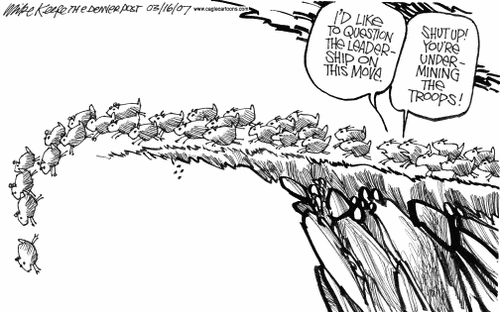There seems to be a misconception about what’s required to build a vibrant open source community and it’s not “community management”. Community management focuses on providing infrastructure and facilitating communication for a community. This includes setting up events, maintaining TO-DO lists, keeping forums under control, making announcements, etc. And that’s all well and good, in fact it’s vital. However, although this role is important it will likely not lead to any significant growth in your community. Communities need Leadership in order to grow because leaders create a vision of the future that draws people to their communities and motivates them into action.

To get people up from their chairs (metaphorically speaking) and participating in a community requires vision and passion. Leaders are people who see the world from a different and new perspective. They dream of a future that is different from today. Their vision of tomorrow is inspiring and solves real problems for real people. A leader shows the audience all the possibilities that they are missing, but goes beyond that by describing a future that users want to become a part of. Everyone wants to belong to something bigger than themselves and leaders create that vision of “something bigger”. In open source projects this is what draws people to your project and moves them to action.
“If you want to build a ship, don’t drum up the men to gather wood, divide the work and give orders. Instead, teach them to yearn for the vast and endless sea”
–Antoine de Saint-Exupery
So how do you craft a message that resonates with your community? You listen. Listening is the key that unlocks not only the problems of your users but also their perspective. You must understand where your user’s pain points are and what motivates them in order to lead them. This is essential. You are trying to craft a vision of the future that includes your users. Their experience and stories must resonate in your message. Your goal is to provide just enough of a blueprint for tomorrow so that your users are able to finish crafting a solution themselves. This gives them ownership in what you’re trying to do and enthusiasm to solve the problem.
If you’ve crafted a direction and message for your project, but still don’t see passionate users drawn into your community, you need to understand what is missing from your message. Ask questions that help you understand what it is your perspective is missing. You’re viewpoint is coming from a place the user doesn’t understand. You’ve either not uncovered a powerful need or your vision is not perceived as helping to transform the user’s reality. You need to discuss what is missing so that you can retell your story in a more meaningful way.
So how do you know you’ve created a compelling story and that your project is actually “leading”? You’ll know because people are excited. They’re participating in meaningful ways. You see your original ideas being changed by your community as they begin to adapt your message to their situation. Once you see these signals you know your story is beginning to resonate in your community. It’s this adoption of your story that will motivate your community and create enthusiastic users.
The other aspect of leadership that is often overlooked is the art of coalition building. As your story begins to resonate with your community and adapt to each user’s needs, you need to manage the alternate messages that form within your community. This means you have to continually revise your vision to include any new or divisive stories that develop. New leaders will emerge within your community that could have agendas that differ significantly from your own. These leaders may eventually harm your community if you haven’t embraced their ideas early on and incorporated elements of their story into your own. However, by embracing them and incorporating their input you will have a stronger community and additional leaders to help within your project. Your community will be stronger with them than without them.
Notice the common themes, conversation and user needs (i.e. pain). Your version of the future must be positioned from the perspective of the user so that they understand how your view of tomorrow solves their problems in a way they understand. Community building is not about managing users so much as it is about leadership and helping users identify a solution to their problems. Make sure your community has developed a strong vision for tomorrow that your members believe in and you’ll be well on your way to building a great community.